What Effective Call Center Training Looks Like in 2025
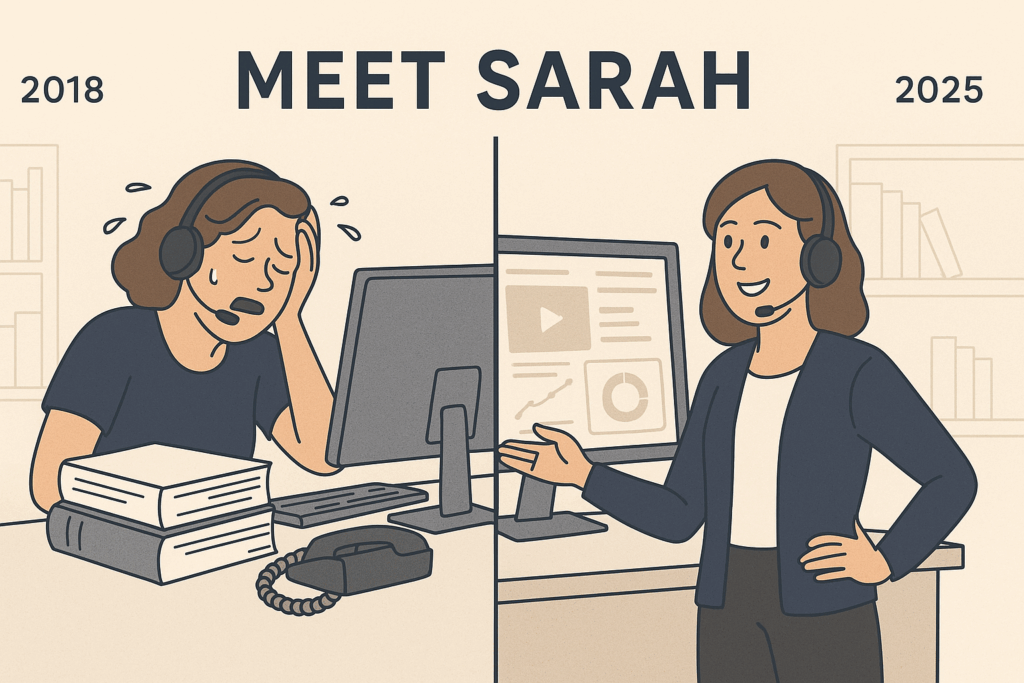
Sarah used to dread her first week on the job.
Back in 2018, fresh out of school and eager to prove herself, she joined a call center team for a fast-growing tech company. Day one was eight hours of PowerPoints. Day two was shadowing agents.
Day three? A role-play that made her stomach churn—pretending to be a furious customer while a coworker stumbled through a mock call. None of it felt real. None of it prepared her for what happened when she finally picked up a call from an actual angry customer.
Fast forward to 2025: Sarah is now a team lead. And the training she gives her new hires? It’s unrecognizable from what she experienced. Her agents are onboarded in interactive, AI-powered simulations—real-time, emotionally dynamic, customer-like conversations. They practice tough calls on day one, make mistakes without fear, and get feedback instantly. No more stage fright. No more guesswork. Just smart, safe, skill-building from the start.
So what changed?
Training in 2025 Is an Entirely Different Game
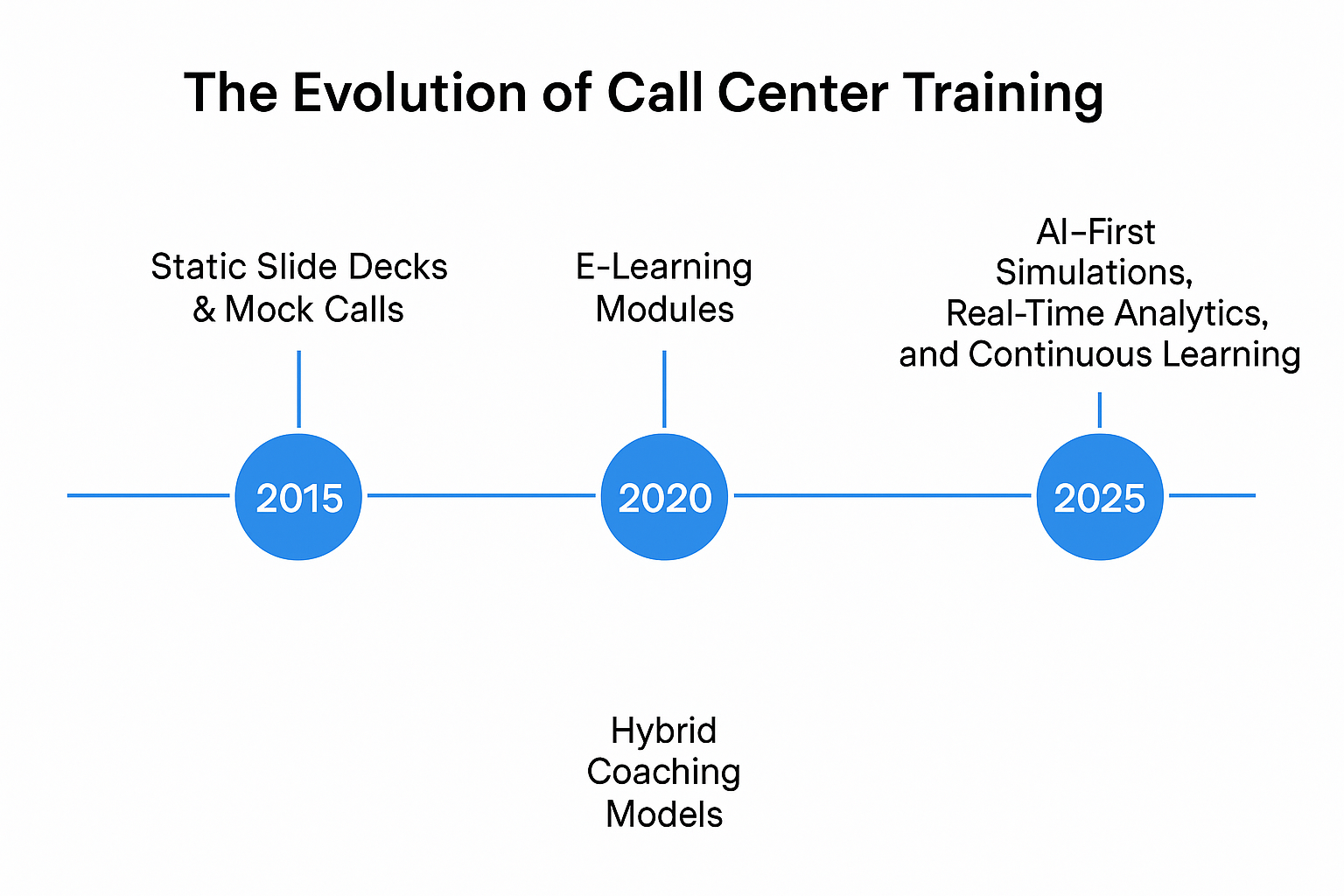
Call center training has gone through a transformation—and not a quiet one. Between rising customer expectations, hybrid workforces, and the explosion of AI, training teams have had to throw out the old playbook. The best ones haven’t just adapted; they’ve reimagined.
Remember the mock calls Sarah had to sit through? In 2025, they’re all but extinct. Top-performing contact centers are investing in AI-first solutions that mimic real conversations with remarkable accuracy. Agents train with virtual customers who interrupt, escalate, ask unpredictable questions—just like a real call. But here’s the difference: they can do it again and again, until they get it right.
Why the Old Way Stopped Working
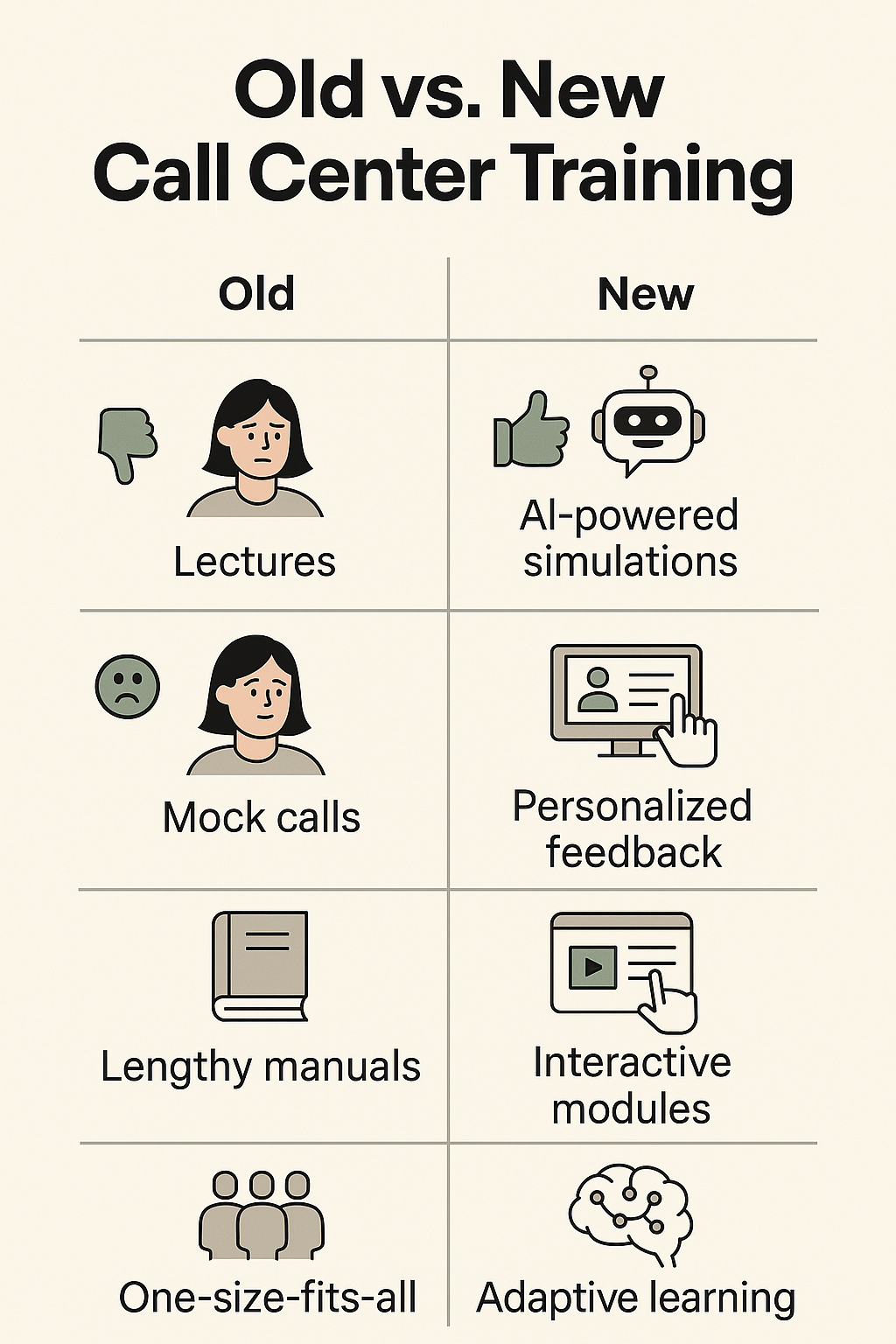
Classroom lectures, static LMS modules, and role-play games weren’t just boring—they were ineffective. They didn’t stick. They didn’t scale. They didn’t support performance after onboarding. In fact, high turnover and low confidence often started in training.
Sarah still remembers the panic she felt her first week taking live calls. “I knew the script, but I didn’t know how to think on my feet,” she says. “I didn’t know how to de-escalate, or what to do when a customer interrupted me mid-sentence.”
She wasn’t alone. Research from McKinsey shows that customer care leaders now rank “retaining and developing talent” as a top-three priority. And for good reason: replacing a single agent can cost upwards of $6,500.
The AI Training Revolution
Today, Sarah’s new hires train inside an AI simulation tool – think of it like a flight simulator, but for customer conversations. The AI listens, reacts, pivots, and escalates. It’s not just “choose-your-own-adventure.” It’s emotionally intelligent, using sentiment analysis to mirror customer moods and throw real-world curveballs.
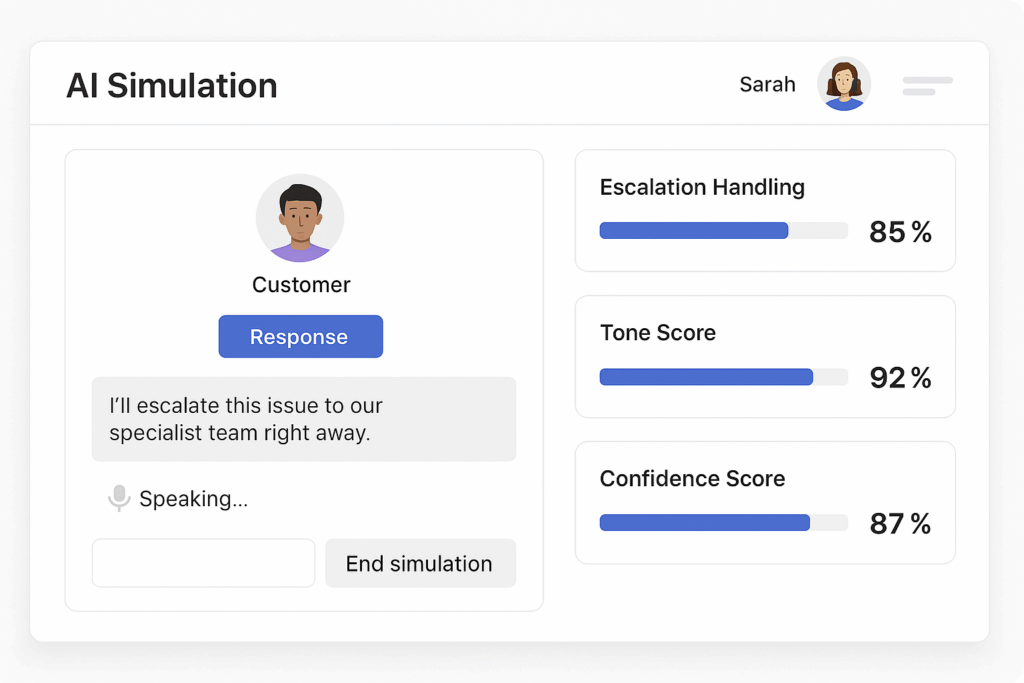
And it works. These simulations cut ramp-up time in half. According to Gartner, 80% of support organizations will use generative AI by the end of 2025. Some are already using it to simulate customer conversations, personalize learning paths, and even coach agents in real-time.
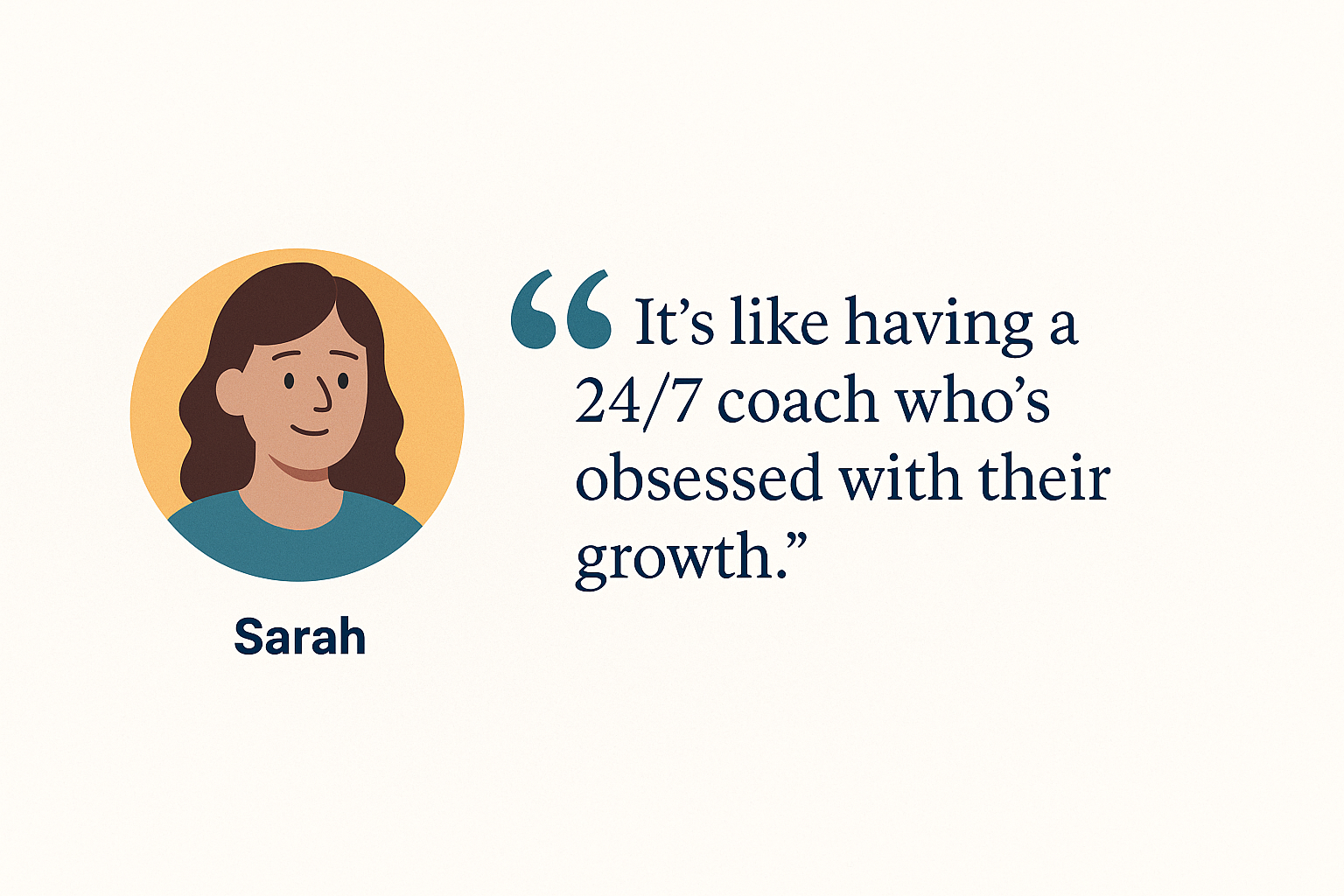
Sarah’s favorite part? The data.
“After every simulation, the system shows agents what they did well, what triggered a negative response, and what they could say differently. It’s like having a 24/7 coach who’s obsessed with their growth.”
ROI That Talks to the C-Suite
This isn’t just about cool tech. It’s about results. According to Accenture, organizations that invest in strong training programs see an average of 353% ROI. And companies using AI-powered training tools are reporting 20% faster handle times and 15% boosts in CSAT.
Sarah’s own center has seen a double-digit drop in first-year turnover since switching to AI-first training. Customers are happier. Agents are sticking around. And when the CFO asks for numbers, Sarah doesn’t blink—because they’re all moving in the right direction.
Old vs. New: A Quick Look
|
| ||
|
| ||
|
| ||
|
| ||
|
| ||
|
|
Bringing It All Together
Training is no longer something you “get through” before the real work begins. For Sarah—and thousands of leaders like her—it’s a strategic differentiator. Her agents are better prepared. Her customers are better served. Her KPIs are better than ever.
And the irony? It all started by replacing the very thing she hated most: awkward mock calls.
Sarah doesn’t dread training anymore. She leads it. And she loves watching her new agents grow faster, perform stronger, and stay longer—because their training works.
Want more insights like this? Subscribe to our newsletter for the latest in AI-powered contact center training, team performance strategies, and customer experience trends.

